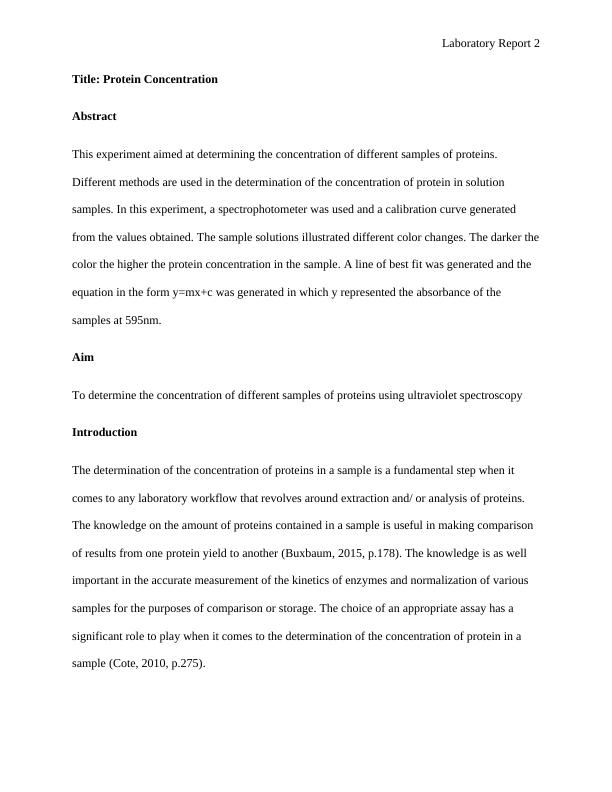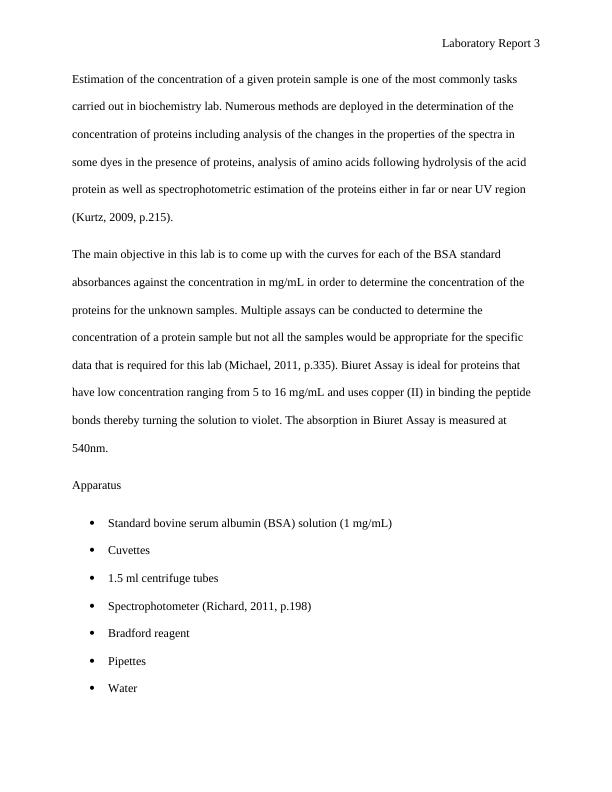Protein Concentration Determination using Spectrophotometer
Added on 2023-06-15
9 Pages1611 Words130 Views
End of preview
Want to access all the pages? Upload your documents or become a member.
Bradford Lab Assay Report: Accurate Protein Concentration Measurement Using Spectroscopy
|11
|1932
|488
Introduction to Biological Sciences
|9
|2033
|151
Bradford Assay: A Safe and Effective Method for Protein Quantification
|10
|2328
|195
Report on Bioassay Lab 2022
|11
|1576
|16
Estimating Concentration of Calcium Pantothenate in Vitamin C Tablets
|13
|2443
|48
Calcium Pantothenate Assay - Microbiological Turbidimetric Vitamin B12 Assays
|11
|1920
|312



